
For SpaceUpClose.com & RocketSTEM
CAPE CANAVERAL, FL – In a harbinger of many great things to come NASA’s nuclear powered Perseverance rover beamed back a truly beyond spectacular first of its kind selfie image showing her dangling in midair from the sky crane descent stage on three nylon tethers just about six feet (2 m) above the floor of Jezero Crater with the descent thrusters whipping up wisps of Martian dust just moments before the picture perfect touchdown at 3:55 p.m. ET Feb. 18 – in what is certain to become an iconic image of spaceflight.
This never seen before type of landing photo was taken from a downwards pointing camera attached to the rocket powered descent stage ‘jet pack’ in the final seconds of the ‘7 Minutes of Terror’ as the rover was being lowered onto the Red Planet’s surface with the descent stage thrusters still firing – and was released by the thrilled NASA JPL Perseverance rover science and engineer team at a media news briefing today, Feb 19.
Nothing like this stunning image has ever been attempted before on any Mars mission and the clarity was overwhelming.
“The team is overwhelmed with excitement and joy to have successfully landed another rover on Mars,” said Adam Steltzner, chief engineer of the Perseverance mission at NASA’s Jet Propulsion Laboratory at a media briefing Friday, as he revealed the image, as he revealed the Perseverance descent image placing it in context with other iconic images from the space age that inspired him and other – including Buzz Aldrin on the Moon on Apollo 11, first up close image of Saturn and its rings from Voyager 1 and The Pillars of Creation from the Hubble Space Telescope.
“When I think on our human space exploration, I am brought to remember the images that bring us humans into that process,” said Adam Steltzner, the Mars 2020 mission’s chief engineer at NASA’s Jet Propulsion Laboratory in California.
“We can only hope in our efforts to engineer spacecraft and explore our solar system that we might be able to someday contribute yet another iconic image to this collection. I’m happy to say that I’m hopeful we can with this.”
“You can see the mechanical bridles that hold the rover underneath the descent stage, (the) three straight lines heading down to the top deck. And then the curly electrical umbilical that is taking all of the electrical signals from the descent stage down to the computer inside the belly of the rover.”
He added that this still image is the first image sent back so far from a movie of the entry, descent and landing (EDL) phase that will be beamed back to Earth over the weekend and they hope to release in full at the next media briefing on Monday, Feb. 22.
Altogether there were six ‘ruggedized’ cameras on board both the descent stage and the rover and the still image is part of the video from those cameras.
The stowed mast, robotic arm, science instruments and high gain antenna and more are visible on the top deck of the Perseverance rover in the image – which was one of several released by the team..
The others included the first color image taken by the rover – a color version view of the very 1st image taken by Perseverance after landing by the front facing Hazard avoidance camera or Hazcam equipped with a fisheye lens.
The new color image was also taken with the protective lens cap now off and from the same spot.
It will be at least a week before the rovers six wheels are activated to roll on the Martian surface.

The Hazcam cameras on Perseverance have been upgraded to take color views compared to the heretofore black and white cameras on prior NASA rovers Spirit, Opportunity and Curiosity.
Unlike with past rovers, the majority of Perseverance’s cameras capture images in color, said the team at the briefing.
After landing, two of the Hazcams captured views from the front and rear of the rover, showing one of its wheels in the Martian dirt as well as rocks and soil and maybe the delta in the distance from the rea hazcam.
Two more images released show a dramatic view from Mars orbit taken of the parachute and descent stage of the Mars Perseverance Rover as seen from the NASA’s Mars Reconnaissance Orbiter (MRO).
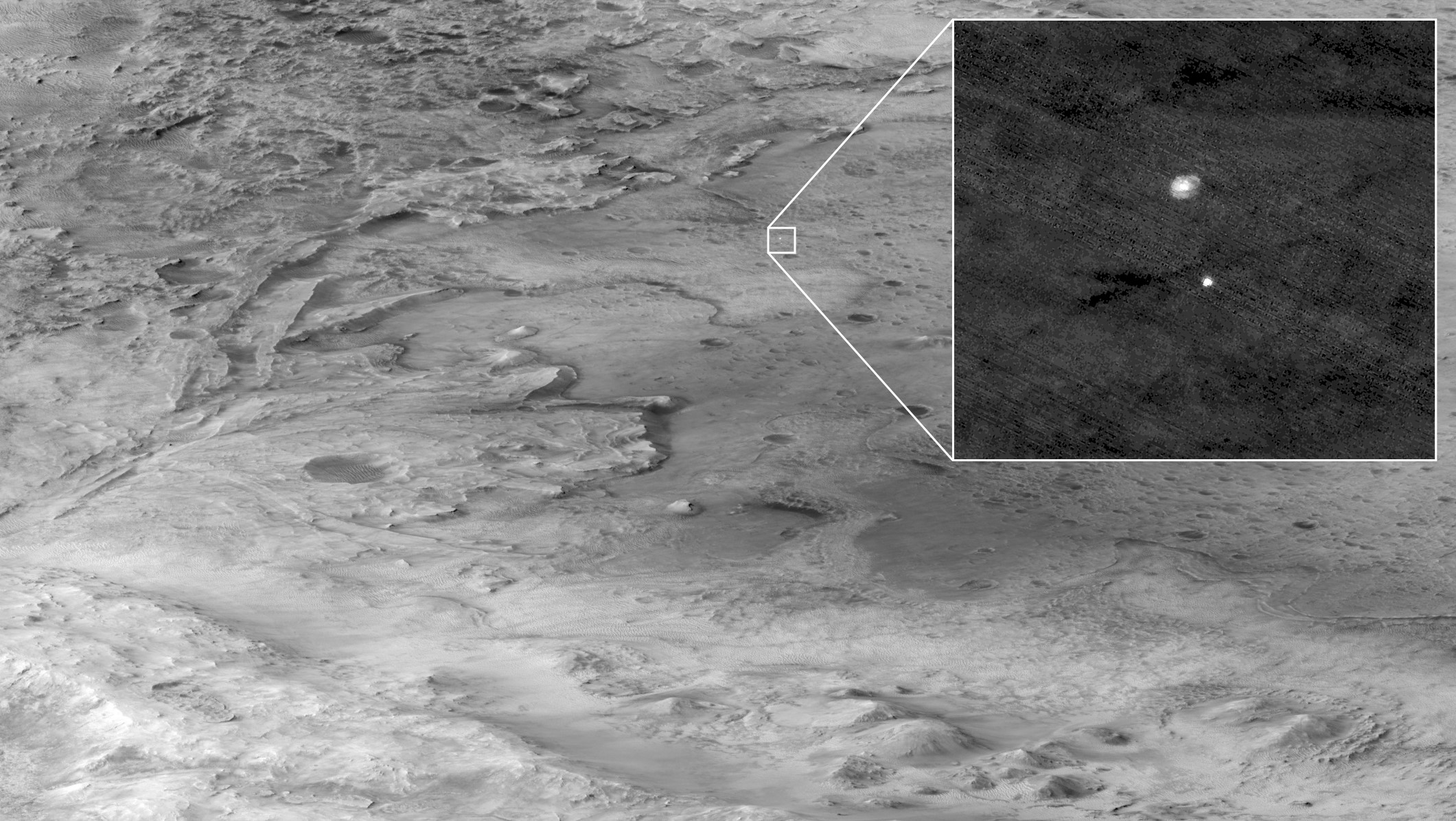
Finally, another front Hazcam image from ground level shows a color closeup of one of the front wheels of the six wheeled rover.
The wheel image also show rocks with holes on them that could be either volcanic basalt or sedimentary in nature
The age of the rocks in Jezero Crater are estimated to be as old as 3.6 to 3.9 Billion years old, said JPL rover deputy project scientist Katie Stack Morgan
“This is a time in Mars history when water was stable on the surface of Mars, and we think this area would have been a habitable environment,” Morgan said.

Perseverance goal is to search for signs of ancient life in the rocks that may contain preserved biosignatures of microbial organisms in the dried out river delta at Jezero Crater.
The prime rocks are stromatolites which main consist of sedimentary layers on fossilized mats of microorganisms deposited billions of years ago.
Perseverance captured a high-resolution close-up from NASA’s eye in the sky orbiting overhead the Mars Reconnaissance. Orbiter (MRO) which used the onboard HiRISE camera to capture the spacecraft sailing into the Jezero Crater landing site with its 70 foot diameter supersonic parachute trailing above.
The rover is seen below still tucked inside the rocket powered descent stage.
The team is still seeking to determine the exact timing of the image to determine if the parachute cords had been cut at that moment or not.
“We’re still figuring out the exact timing of when this image was taken as well,” Aaron Stehura, the Mars 2020 EDL deputy phase lead, said during Fridays media briefing.
“So, it’s even possible that we had already come out of the protective entry capsule and we’re coming down on rockets to the surface.”
MRO also captured similar descent images of the parachute of NASA’s Phoenix lander and Curiosity rover
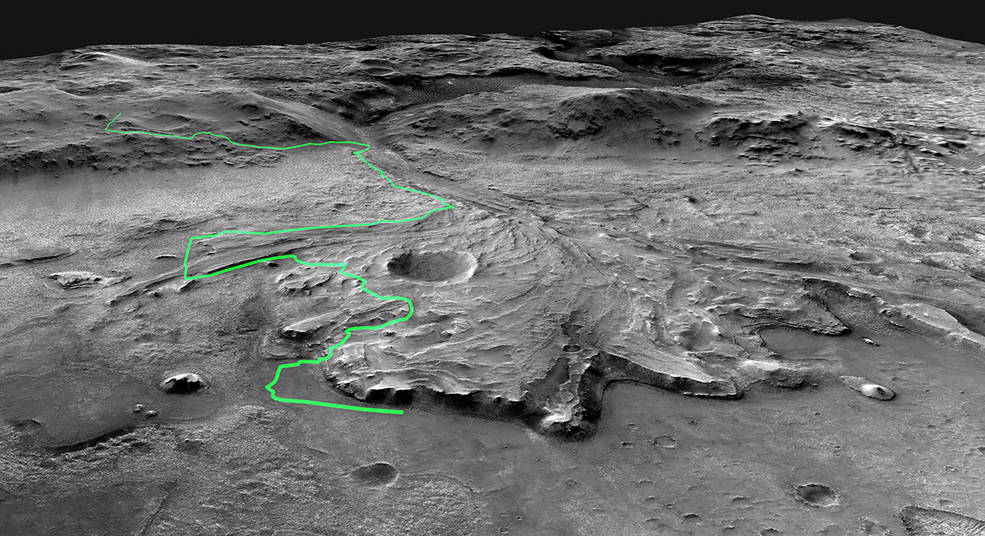
After enduring the harrowing ‘7 Minutes of Terror’ plunge through the Martian atmosphere following a 7 month interplanetary journey NASA’s Perseverance rover nailed her nail-biting landing on Mars Thursday afternoon, Feb. 18, and transmitted the first two images just moments later from the floor of the Jezero Crater landing site to reveal an alien but scientifically bountiful terrain she will explore in search of ancient microbial life and gather pristine surface rock and soil for eventual launch back to Earth.
Perseverance is the most powerful and sophisticated robot ever dispatched from Earth to the most daring, difficult and scientifically rewarding landing site ever attempted by the agency on the surface of the Red Planet at Jezero crater – that simultaneously begins the first leg of a truly ground breaking astrobiology mission aimed at collecting pristine soil and regolith samples that will be returned to Earth a decade from now in search of tell-tale signs of past life.
Confirmation of the successful touchdown was announced in mission control at NASA’s Jet Propulsion Laboratory in Southern California at 3:55 p.m. EST (12:55 p.m. PST), during a live broadcast on NASA TV.
The rover is healthy and communicating as of today.
“I’m happy to say the rover is doing great and is healthy on the surface of Mars,” said Pauline Hwang, assistant strategic mission manager.
Upcoming later Friday and this weekend several pyrotechnic charges are expected to fire to releasing Perseverance’s mast (the “head” of the rover) seen in the lead image from where it is fixed on the rover’s deck.
The Navigation Cameras (Navcams), which are used for driving, share space on the mast with two science cameras: the zoomable Mastcam-Z and a laser instrument called SuperCam.
At the briefing the team said the mast is scheduled to be raised Saturday, Feb. 20, after which the Navcams are expected to take panoramas of the rover’s deck and its surroundings.
“In the days to come, engineers will pore over the rover’s system data, updating its software and beginning to test its various instruments. In the following weeks, Perseverance will test its robotic arm and take its first, short drive. It will be at least one or two months until Perseverance will find a flat location to drop off Ingenuity, the mini-helicopter attached to the rover’s belly, and even longer before it finally hits the road, beginning its science mission and searching for its first sample of Martian rock and sediment,” said NASA.
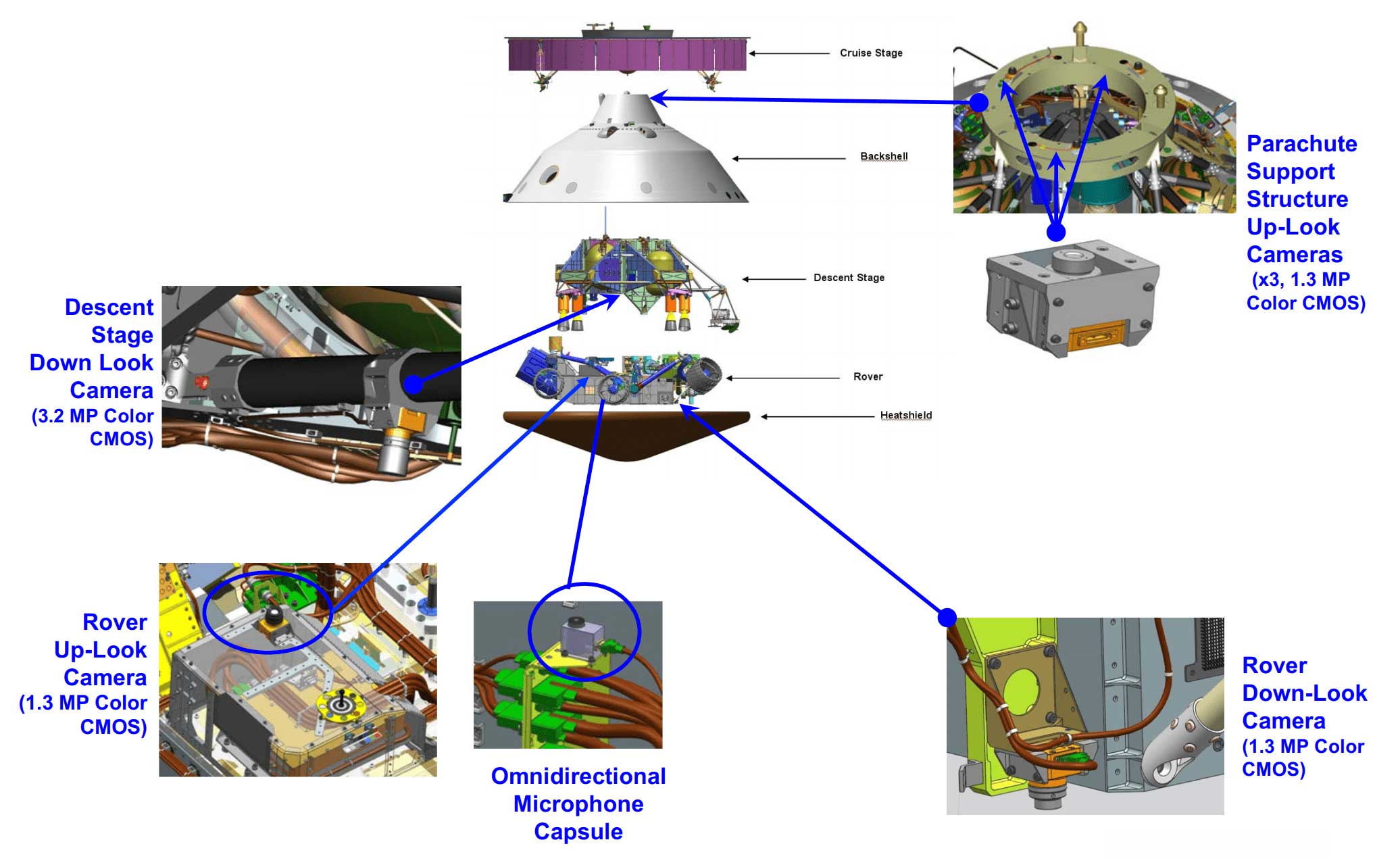
x
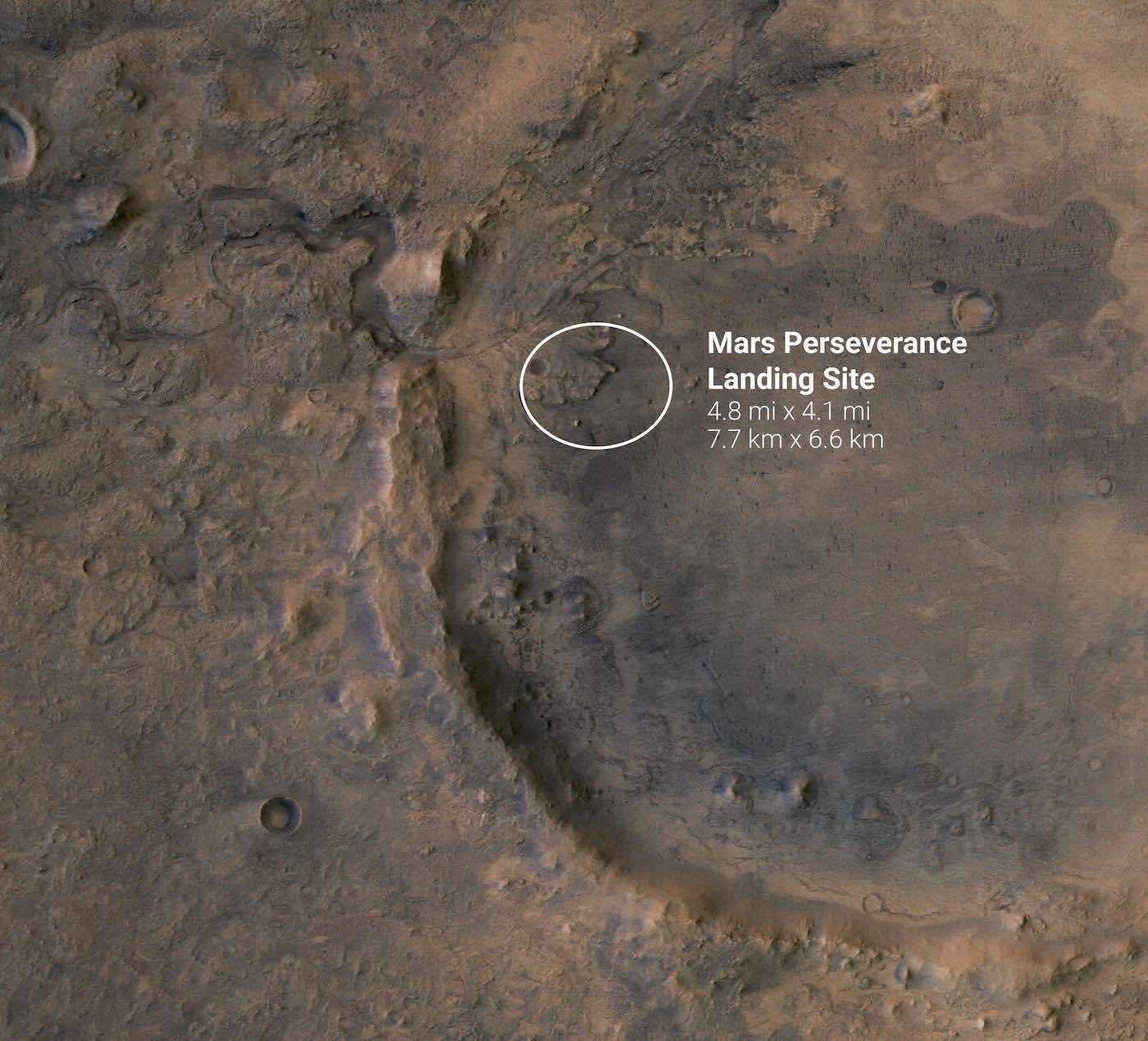
Download our Free “Mars 2020 Exploration Mission Guide” created by RocketSTEM magazine and Space UpClose:
https://www.rocketstem.org/2020/07/20/mars-2020-mission-overview/
Link on Space UpClose Home Page upper right below Social Media links
My 12-page ‘Mars 2020 Perseverance Rover Mission Overview’:
https://www.rocketstem.org/2020/07/20/mars-2020-mission-overview/
Meanwhile her older twin sister river Curiosity just celebrated 3000 Sols of exploring Mars.
See my Sol 3000 mosaic and story here:
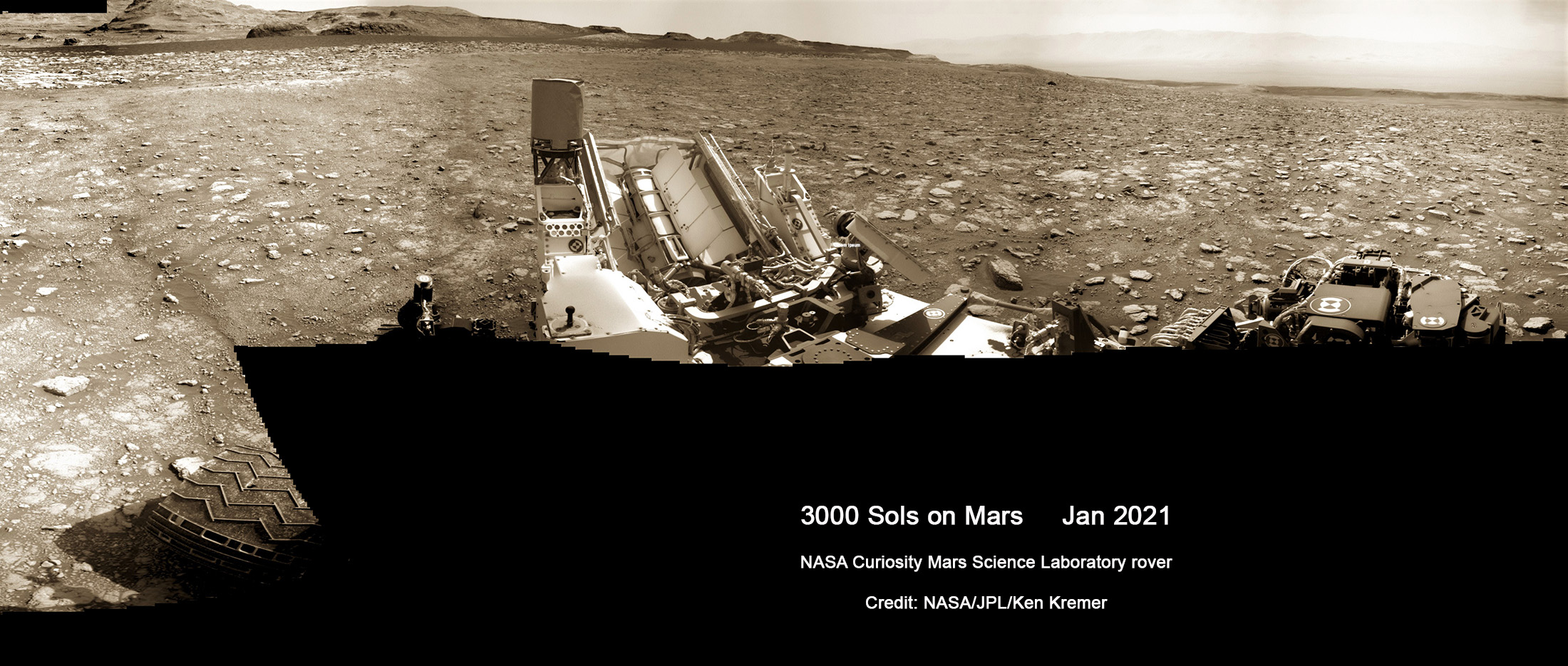
Watch our live and complete ‘Stay Curious’ with live Perseverance landing commentary today Feb 18, 2021 as well as earlier programs on Mars Mania on Feb 12 and Dec 14 and Dec. 30 , 2020 shows on many space topics including Mars Perseverance, Artemis and human spaceflight.
https://www.facebook.com/175507880819/videos/752176242375043
https://www.facebook.com/175507880819/videos/3246699658764085
https://www.facebook.com/175507880819/videos/226784775573274
https://www.facebook.com/175507880819/videos/775199953071117
Watch Ken’s continuing reports about Mars 2020 Perseverance and Curiosity rovers, Artemis and NASA missions, SpaceX, Starlink, Commercial Crew and Starliner and Crew Dragon and onsite for live reporting of upcoming and recent SpaceX and ULA launches including Crew 1 & 2, Demo-2, ISS, X-37B, Solar Orbiter, NRO spysats and national security missions and more at the Kennedy Space Center and Cape Canaveral Space Force Station.
Stay tuned here for Ken’s continuing Earth and Planetary science and human spaceflight news: www.kenkremer.com –www.spaceupclose.com – twitter @ken_kremer – email: ken at kenkremer.com
Dr. Kremer is a research scientist and journalist based in the KSC area, active in outreach and interviewed regularly on TV and radio about space topics.
………….
Ken’s photos are for sale and he is available for lectures and outreach events
Ken has created hundreds of widely published Mars rover mosaics and lectures also about NASA’s Mars rovers
Please consider supporting Ken’s work by donating at Patreon:
https://www.patreon.com/kenkremer
x



